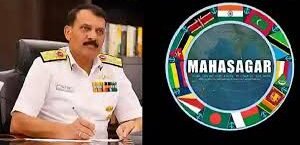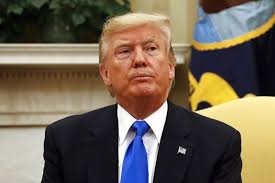Freedom Fighters of India and the Revolt of 1857
Introduction
The Revolt of 1857, also known as the First War of Indian Independence, was a monumental event in Indian history. This uprising marked the beginning of a long and arduous struggle against British colonial rule. The revolt saw the emergence of numerous freedom fighters who played crucial roles in challenging the British authorities. Understanding these historical figures and events is vital for students preparing for government exams, especially those focused on history and general studies.
Causes of the Revolt
The revolt was triggered by a combination of political, economic, social, and military grievances. The British East India Company’s policies, including the Doctrine of Lapse and heavy taxation, alienated Indian rulers and peasants alike. Additionally, the introduction of the Enfield rifle, which required soldiers to bite cartridges greased with animal fat, was seen as an affront to Hindu and Muslim religious beliefs.
Key Freedom Fighters
Several prominent leaders emerged during the revolt, each contributing significantly to the struggle. Rani Lakshmibai of Jhansi, known for her valiant resistance, became a symbol of courage. Nana Sahib led the rebellion in Kanpur, while Tantia Tope was instrumental in leading guerrilla warfare. Bahadur Shah Zafar, the last Mughal emperor, was declared the symbolic leader of the uprising.
Major Events of the Revolt
The revolt began on May 10, 1857, in Meerut, when Indian soldiers (sepoys) rebelled against their British officers. The rebellion quickly spread to Delhi, where the sepoys declared Bahadur Shah Zafar as their leader. Major battles occurred in places like Kanpur, Lucknow, Jhansi, and Gwalior. Despite initial successes, the revolt was eventually crushed by the British due to their superior military strength and resources.
Impact and Consequences
The Revolt of 1857 had far-reaching consequences. It marked the end of the Mughal Empire and the East India Company’s rule. The British Crown took direct control of India, leading to significant changes in administration and policies. The revolt also sowed the seeds of nationalism, inspiring future generations to fight for India’s independence.

Why This News is Important
Understanding Historical Struggles
This news provides insight into the early struggles for Indian independence, highlighting the bravery and sacrifices of freedom fighters. It is crucial for students to understand these historical events to appreciate the roots of India’s freedom movement.
Relevance to Government Exams
For students preparing for government exams, knowledge of the Revolt of 1857 is essential. It frequently appears in history and general studies sections, making it a critical topic for aspirants of positions like IAS, PCS, and other civil services.
Inspiration from Freedom Fighters
Learning about the courage and resilience of leaders like Rani Lakshmibai and Tantia Tope can inspire students. Their stories serve as powerful reminders of the importance of determination and patriotism.
Contextual Understanding
The revolt provides a context for understanding the subsequent independence movement. It highlights the early resistance against colonial rule, setting the stage for the larger freedom struggle that followed.
Broadening Knowledge
Exploring the causes and effects of the revolt broadens students’ knowledge of Indian history. It helps them connect historical events with contemporary issues, fostering a deeper understanding of India’s journey to independence.
Historical Context
Early Colonial Rule
Before the revolt, India was under the control of the British East India Company, which had gradually expanded its influence through conquests and treaties. The company’s exploitative policies led to widespread discontent among various sections of Indian society.
Doctrine of Lapse
The Doctrine of Lapse, introduced by Lord Dalhousie, allowed the British to annex any princely state where the ruler did not have a male heir. This policy was deeply resented by Indian rulers, contributing to the uprising.
Economic Exploitation
Heavy taxation and the destruction of traditional industries by British policies led to severe economic distress among Indian peasants and artisans. This economic exploitation fueled the anger that erupted in the revolt.
Social and Religious Factors
The British interference in social and religious practices, such as the introduction of Western education and the abolition of practices like Sati, created widespread resentment. The use of animal fat in rifle cartridges was the final spark that ignited the rebellion.
Key Takeaways from the Revolt of 1857
| S.No | Key Takeaway |
|---|---|
| 1 | The Revolt of 1857 marked the first major resistance against British rule in India. |
| 2 | Key leaders included Rani Lakshmibai, Nana Sahib, Tantia Tope, and Bahadur Shah Zafar. |
| 3 | The revolt was triggered by a combination of political, economic, social, and military grievances. |
| 4 | The uprising led to the end of the East India Company’s rule and the beginning of direct British governance. |
| 5 | The revolt sowed the seeds of Indian nationalism, inspiring future independence movements. |
Important FAQs for Students from this News
1. What was the Revolt of 1857?
The Revolt of 1857, also known as the First War of Indian Independence, was a significant uprising against British colonial rule in India. It marked the beginning of organized resistance against the British East India Company’s control and was driven by various political, economic, and social grievances.
2. Who were some of the key leaders of the Revolt of 1857?
Key leaders included Rani Lakshmibai of Jhansi, Nana Sahib, Tantia Tope, and Bahadur Shah Zafar. Each played a critical role in leading and inspiring resistance against British forces during the uprising.
3. What were the main causes of the Revolt of 1857?
The primary causes included the Doctrine of Lapse, economic exploitation, social and religious interference by the British, and military grievances, such as the use of cartridges greased with animal fat which offended both Hindu and Muslim soldiers.
4. What were the consequences of the Revolt of 1857?
The revolt led to the end of the British East India Company’s rule and the establishment of direct British Crown control over India. It also marked the beginning of a more structured and organized Indian nationalist movement.
5. How did the Revolt of 1857 influence later independence movements?
The revolt inspired subsequent generations and was a precursor to the larger Indian independence movement. It highlighted the potential for widespread resistance and set the stage for future nationalist activities that eventually led to India’s independence in 1947.
Some Important Current Affairs Links














